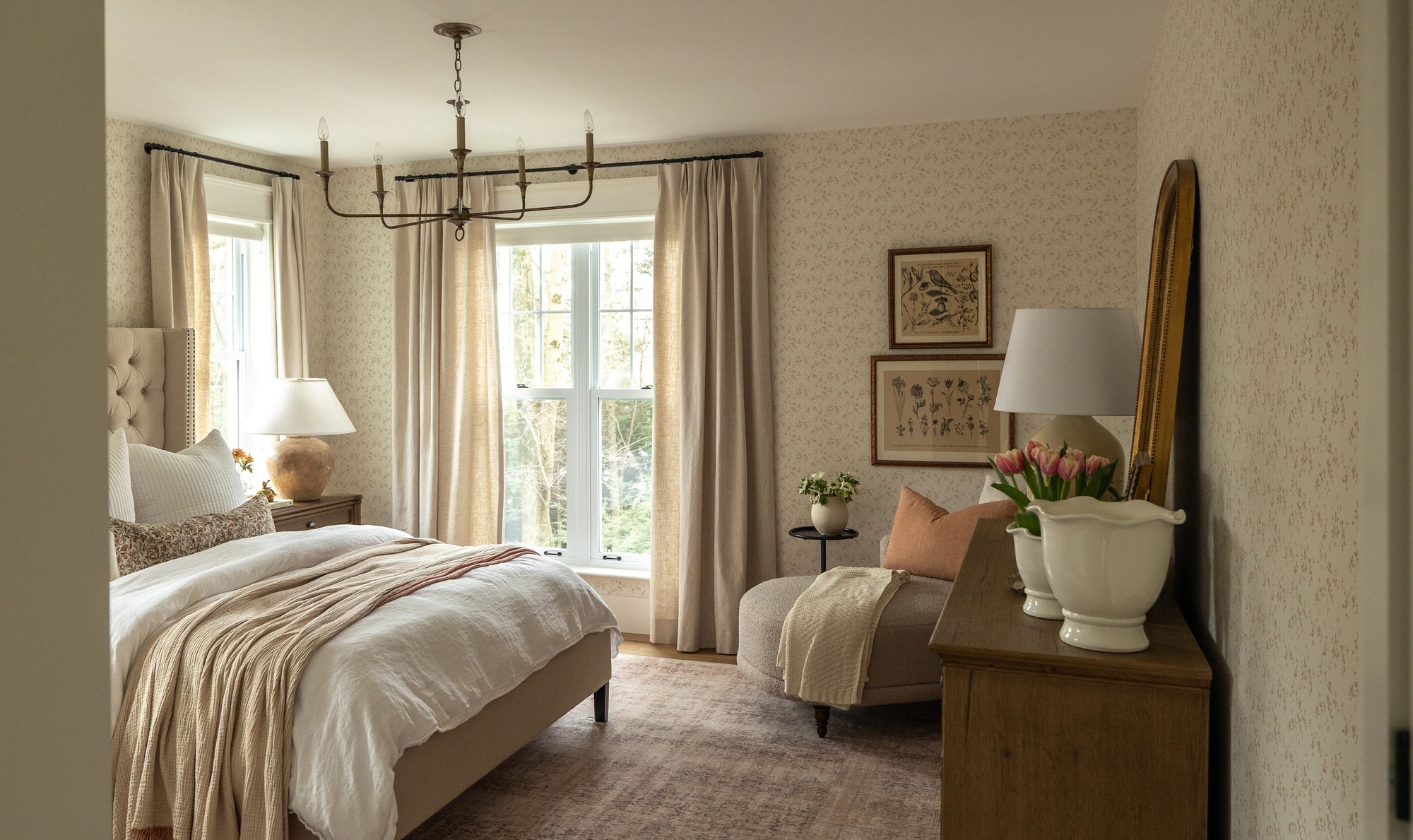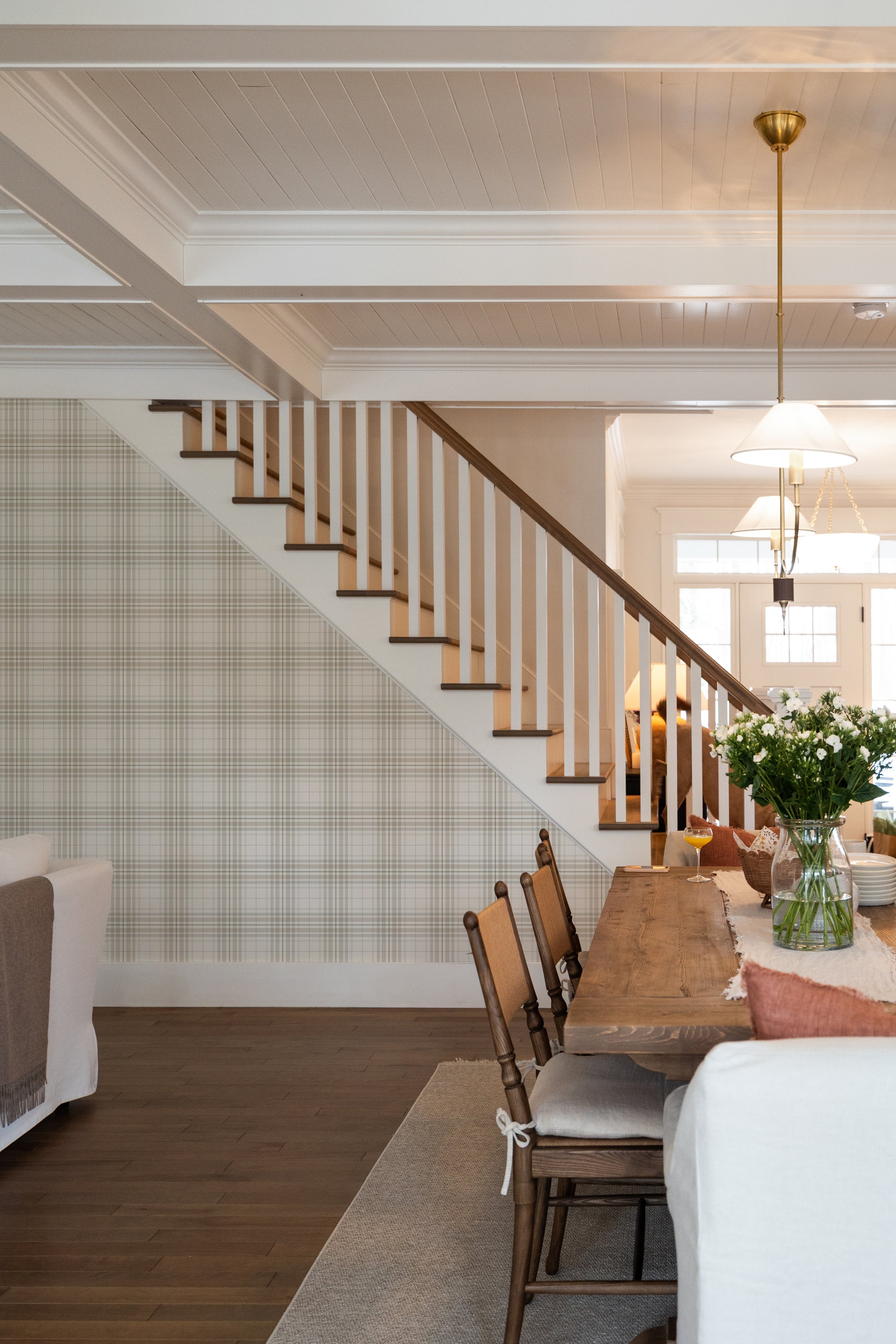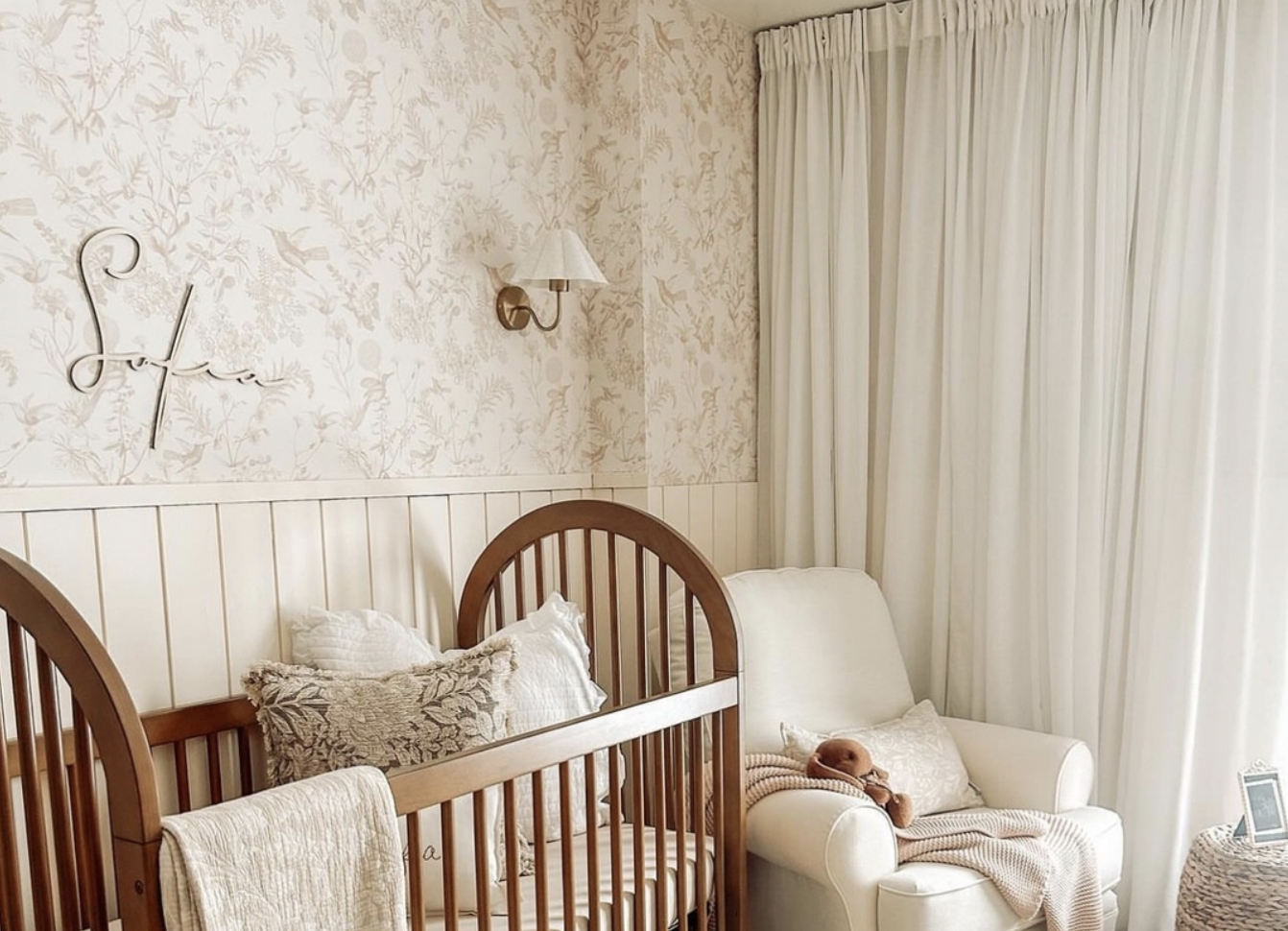
How to calculate the number of panels for
Half wall(s)
We will help you calculate the number of panels needed for your wallpaper or mural project, whether it's for a half wall or any other wall partially covered in height.
Step 1
Choose your type of paper
Pre-pasted or self-adhesive. Depending on the type of paper you choose, it will impact your panel count calculation.
To make the best choice for your paper type, you can refer to our page Pre-pasted or self-adhesive.
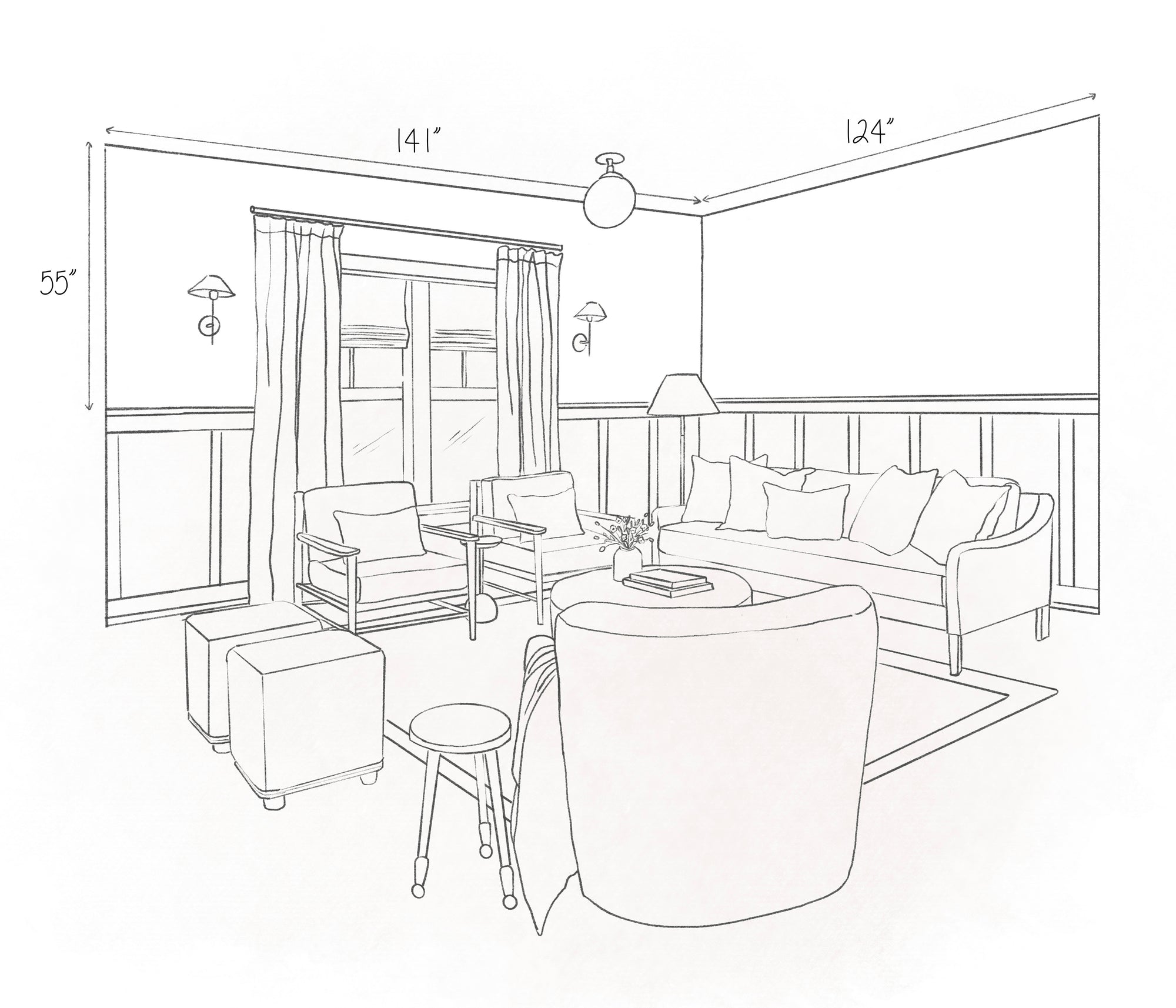
Step 2
Measure the walls
Measure the wall(s) where you want to install your wallpaper, making sure to note the width and height in inches.
Good to know: If you are covering multiple walls, note that the panels continue from one wall to the next. The wallpaper will easily follow the angle without interrupting the pattern.
Step 3
If applicable, take measurements of the openings
Measure the distance between the corner of the wall and the edge of the window or door trim. It’s also important to measure the distance from the ceiling to the top of the trim, as well as from the bottom of the trim to the floor. The key is to take all the necessary measurements of the surfaces that will be covered with wallpaper to ensure accurate calculations.
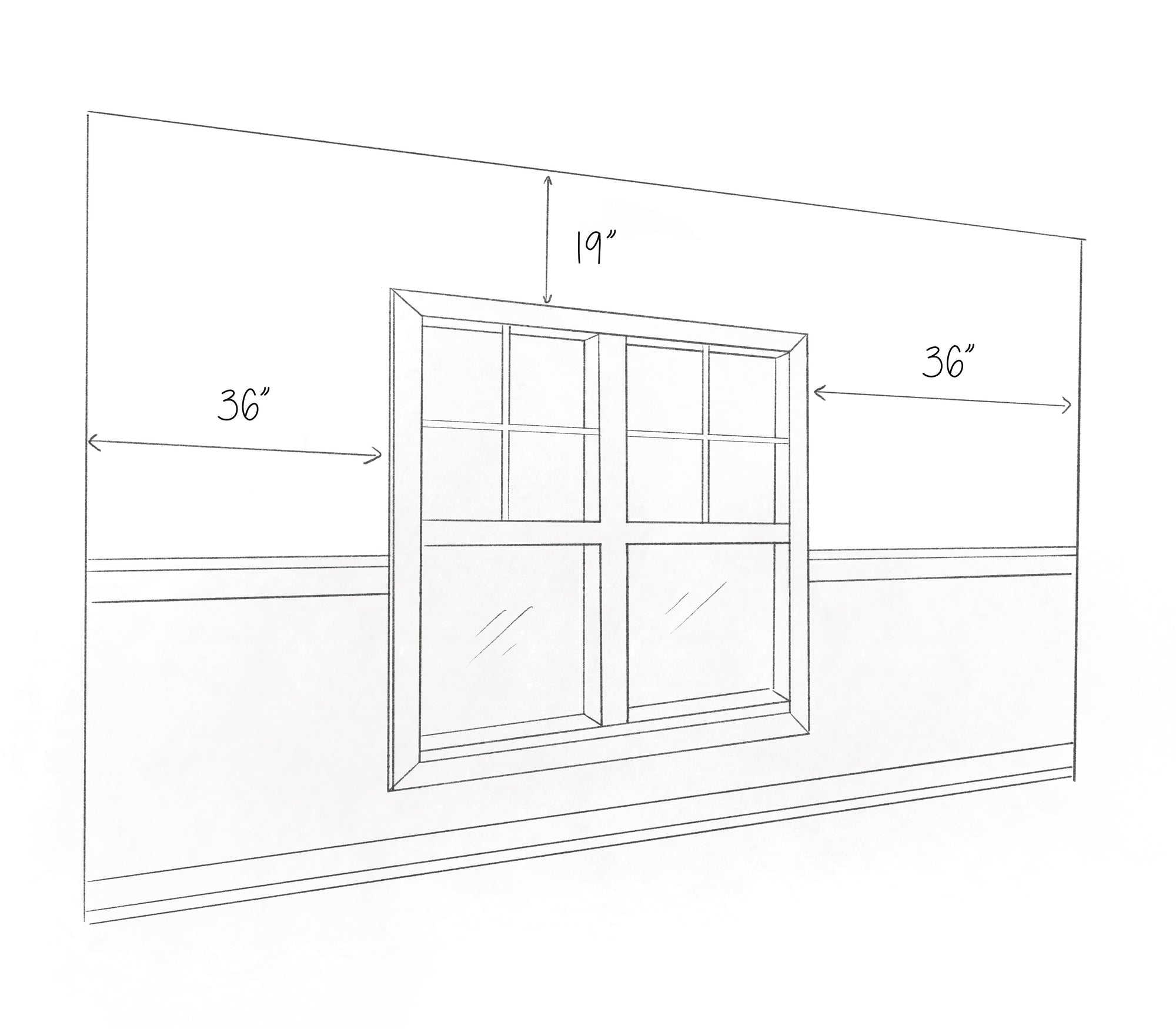
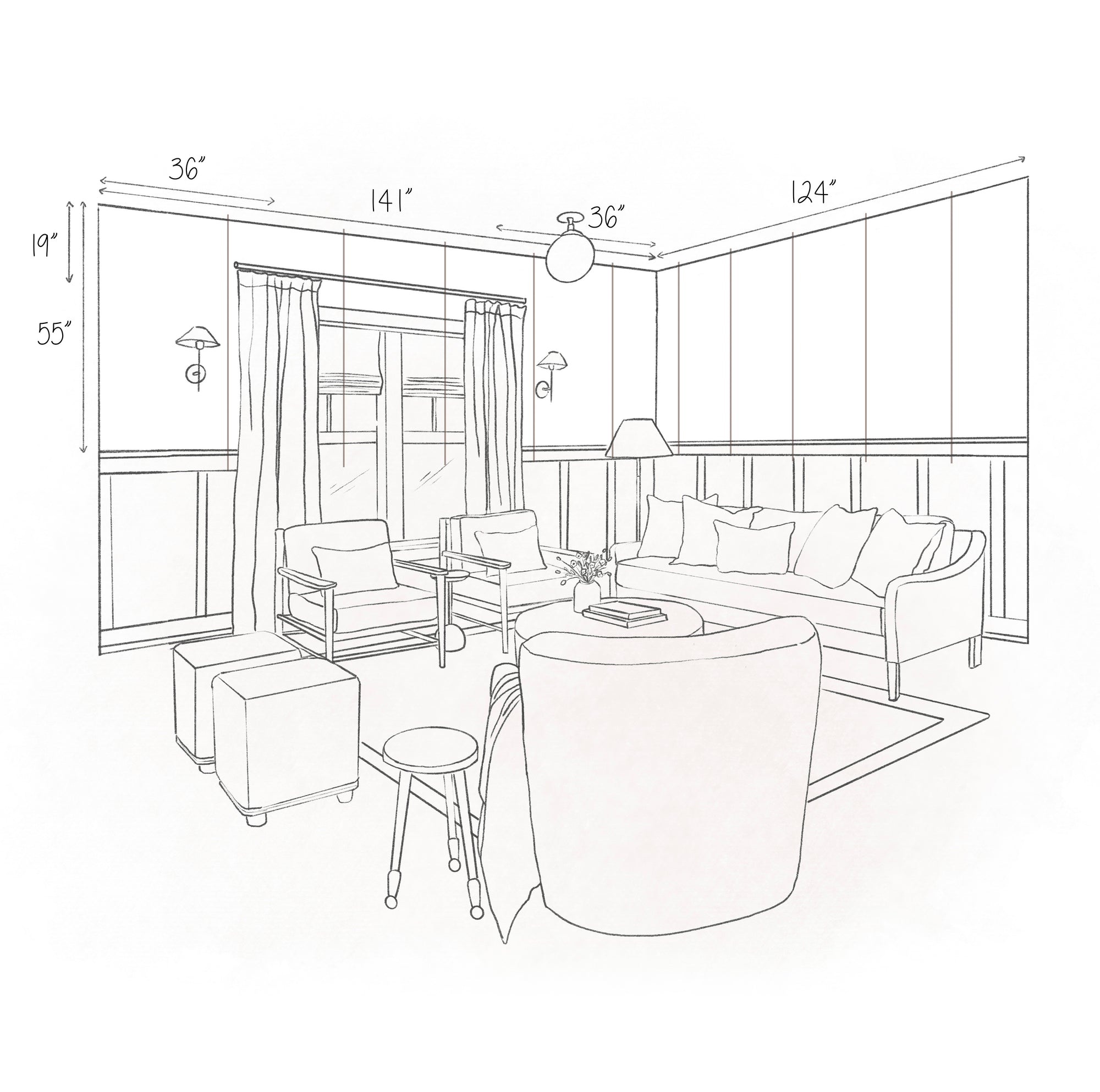
Step 4
Calculate the Total Number of Panels
To determine the total number of panels needed, simply divide the total width by 24.5 for pre-pasted paper or by 24 for peel-and-stick paper.
Pre-pasted wallpaper has an initial width of 24 in, but it slightly expands when wet, ultimately covering 24.5 in.
For example, for walls that are 265 in wide:
- With pre-pasted: 265 ÷ 24.5 = 10.82, which means you need 11 panels.
- With peel-and-stick: 265 ÷ 24 = 11.04, which means you need 12 panels.
Step 5
Calculate Panel Heights
Depending on the layout of your room, it is sometimes possible to use shorter panels above doors. For windows, if you have an area to cover both above and below, it is best to opt for a full-height panel, especially in the case of a mural.
We recommend making a plan by drawing the different panels to better visualize the installation. Keep in mind that pre-pasted panels cover 24.5 inches wide, while adhesive panels cover 24 inches wide. Another option is to measure directly on your walls and mark a small line every 24 or 24.5 inches to see where each panel will land and determine the required height.
It is important to note that walls in a house are never perfectly straight. Therefore, it is essential to allow a margin of at least 4 inches in height for optimal installation. For example, if the area you need to cover is 29 inches high, you should choose 48-inch panels to include this margin.
We offer eight different heights: 30, 48, 60, 72, 92, 108, 120, and 132 inches.
Our wallpaper is installed from left to right. If you want to cover all the walls in a room, it is recommended to start the installation in a less visible place, such as behind a door. This helps minimize the impact of the seam between the first and last panel, where the pattern alignment will be offset.
Attention!!!
We do not recommend purchasing longer panels with the intention of cutting them into several sections to install side by side. This could compromise the continuity of the pattern from one panel to another.
Step 5
Order Online
Go to the page of the chosen design, then select the paper type, panel size, and desired quantity. Add the items to your cart.
Before finalizing your order, review your cart. If you have panels of different heights, specify in the Special instructions for the order box which height corresponds to each panel and clarify whether the pattern alignment should be done from the top or bottom.
Example: All panels are 60 inches high except panel 3, which is 30 inches high. Alignment should be from the top.
Finally, click Proceed to checkout to complete your purchase.
If you have any questions, feel free to contact us by email at info@stationd.ca.
You have another type of wall to cover?

